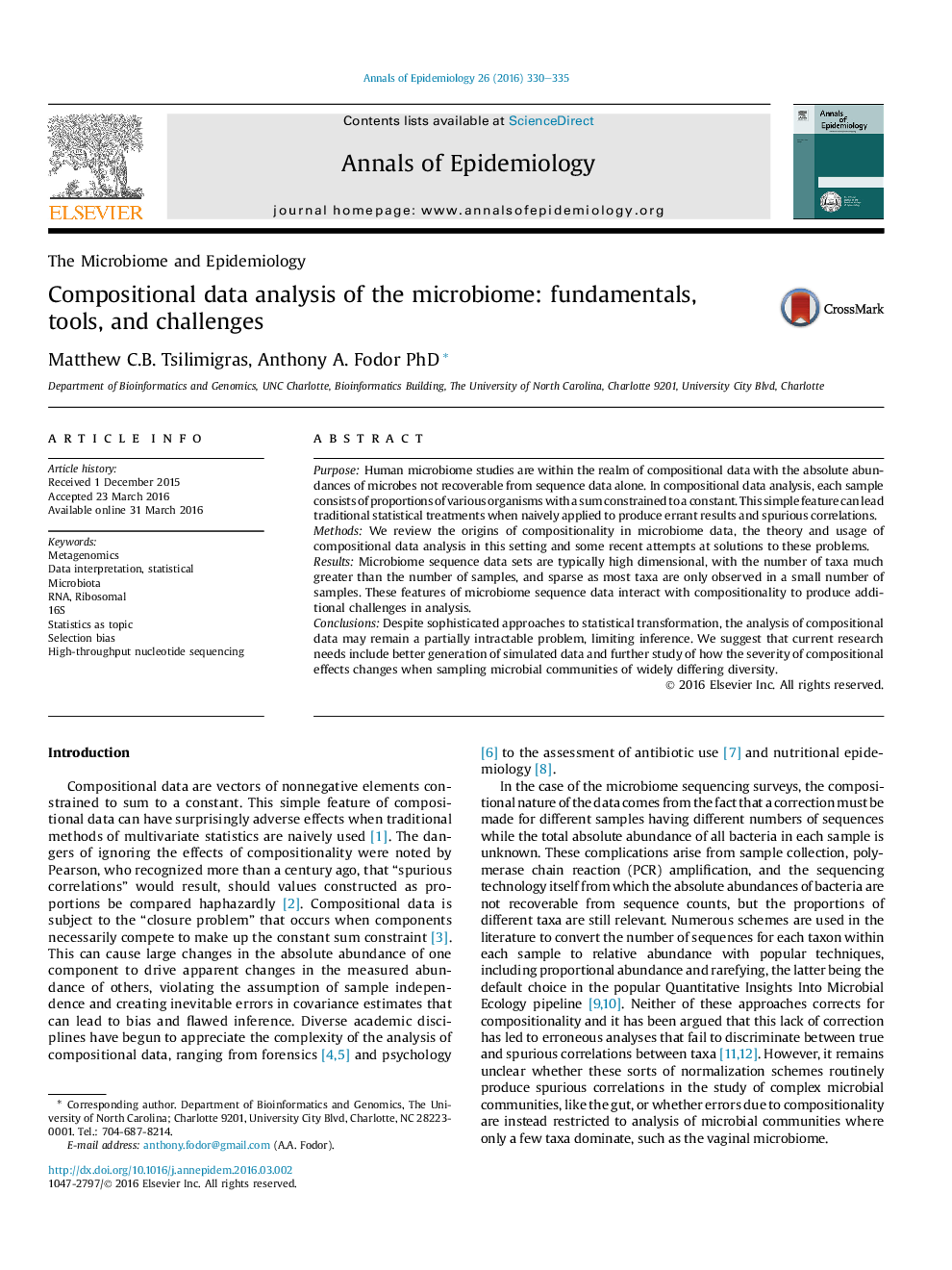| Article ID | Journal | Published Year | Pages | File Type |
|---|---|---|---|---|
| 3443634 | Annals of Epidemiology | 2016 | 6 Pages |
PurposeHuman microbiome studies are within the realm of compositional data with the absolute abundances of microbes not recoverable from sequence data alone. In compositional data analysis, each sample consists of proportions of various organisms with a sum constrained to a constant. This simple feature can lead traditional statistical treatments when naively applied to produce errant results and spurious correlations.MethodsWe review the origins of compositionality in microbiome data, the theory and usage of compositional data analysis in this setting and some recent attempts at solutions to these problems.ResultsMicrobiome sequence data sets are typically high dimensional, with the number of taxa much greater than the number of samples, and sparse as most taxa are only observed in a small number of samples. These features of microbiome sequence data interact with compositionality to produce additional challenges in analysis.ConclusionsDespite sophisticated approaches to statistical transformation, the analysis of compositional data may remain a partially intractable problem, limiting inference. We suggest that current research needs include better generation of simulated data and further study of how the severity of compositional effects changes when sampling microbial communities of widely differing diversity.
